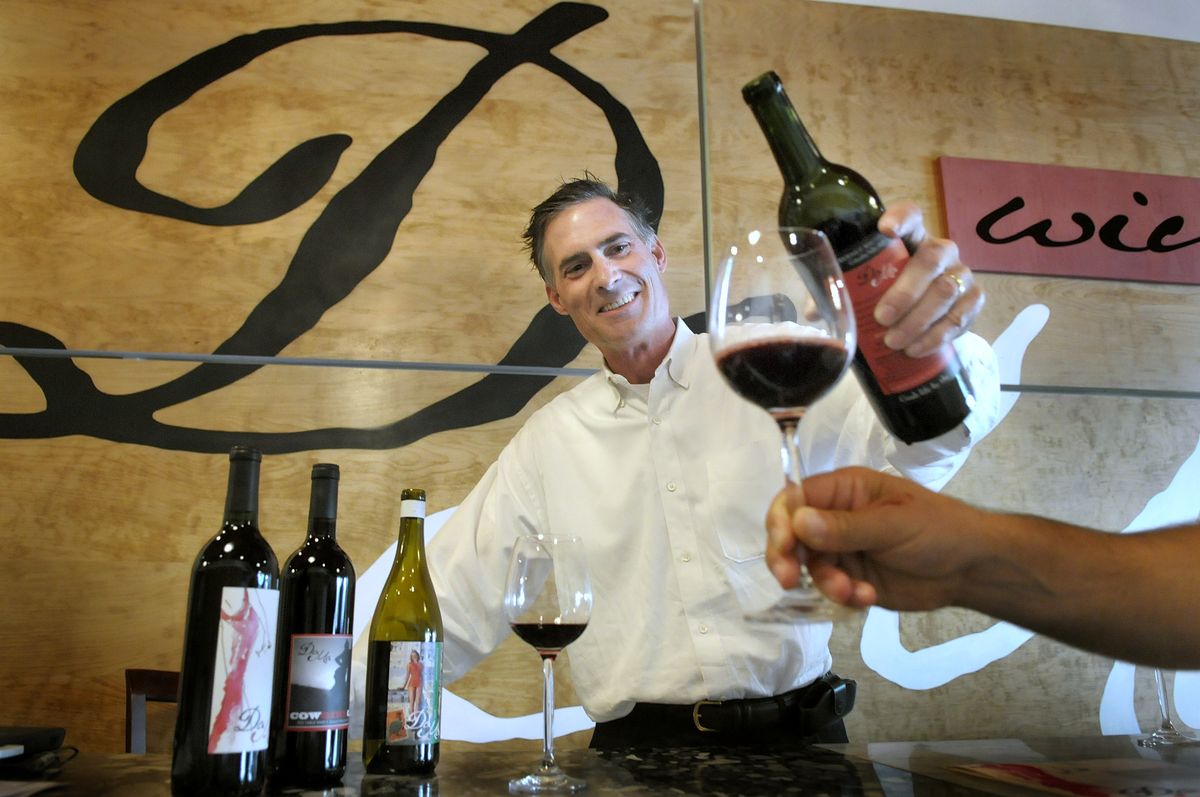Walla Walla knows wine
Something for amateurs, connoisseurs

You know you’re close to Walla Walla when the brown scablands are interrupted by fuzzy-looking green patches on the hillsides. Those dark green patches are vineyards. The other indicator is the increased frequency of “Please don’t drink and drive” signs.
The Walla Walla Valley has become synonymous with great wine. A combination of ideal soil, long, hot summer days and cool nights has turned Walla Walla into one of the more successful wine producing areas in the country.
There are about 100 wineries and vineyards in the Walla Walla Valley so you will not run out of places to visit, even if you go several times. It’s a good idea to plan ahead; go online, pick up a visitor’s guide or call around before you head south. That first visit can be pretty overwhelming, but there’s no need to be intimidated – wine people are friendly folks.
Approaching town from the west on Highway 12, one of the first wineries you’ll see is L’Ecole No. 41. Located in the historic Frenchtown School in Lowden, L’Ecole began producing wine in 1983.
“I’d say it was our merlot that really put us on the map,” said Brooke Williams, tasting room manager at L’Ecole. “The grapes we use are not grown right here at the schoolhouse. We have acreage contracts with 20 different vineyards here in Walla Walla and in the Columbia Valley.” Expect a variety of wines including chenin blanc, cabernet sauvignon, Syrah and semillon.
The tasting room at L’Ecole is unique because the old schoolhouse bookcases and some blackboards are preserved. It’s well-known among the other wineries that L’Ecole’s tasting room staffers are great visitor guides.
“They send people our way all the time,” said Sarah German, tasting room associate at Pepper Bridge Winery, south of Walla Walla. “We all do that. We try to help people find their way so they can have a good experience – we want them to come back.”
Williams agrees.
“There is never a dumb question and we are not offended if you dump the wine out,” she said. Her best advice to first-time wine tourists is to plan ahead and get a designated driver.
“First timers don’t realize how tasting wine all day adds up, especially in the summer heat,” said Williams. It’s also a good idea to bring a cooler if you plan to buy wine.
“I promise, your wine will not taste good after a long, hot car ride home,” Williams said.
Also on Highway 12 but a little closer to town is Cougar Crest Winery.
Rufus, the winery dog, will greet you in front of the new tasting room, which opened in April.
Expect a variety of wines, including cabernet franc, Syrah, Viognier and ruby-style port – as well as ongoing art exhibits.
“I’d say April is the ideal month to come down here because spring is so beautiful in the Northwest,” said Boone Allen, tasting room and wine club manager at Cougar Crest. “In May and June is when we get the biggest push of tourists, and it’s really busy.”
During harvest and crush, visitors can sit on the patio and watch all the commotion as the grapes come in.
The Walla Walla wineries are concentrated roughly in four areas: downtown, by the airport, and south and west of town. Some wine visitors take one part of town at a time.
“That makes it a little more approachable for some,” said Allen, who also recommends the Walla Walla Valley Wine Alliance’s Web site as a guide.
Allen encourages visitors to try wines they aren’t familiar with – and it is OK not to like them.
“In my opinion, honesty is the best policy,” he said. “Voice why you don’t like the wine, that’s fine with me. It may not be bad wine, it just tastes different to people.”
Just outside downtown, vineyards stretch as far as the eye can see.
Organized in rows, carefully pruned trellised, watered and pampered, the vines carry the grapes of this year’s vintage.
Many of the vineyards have planted lavender patches and perennial gardens, paying homage to the layout of a traditional French or Italian vineyard.
Roses are the traditional companion plants of grapes because the two plants are susceptible to many of the same diseases and pests. However, roses show symptoms sooner than the valuable grapes, alerting the winemaker to a pest problem before it gets out of hand.
Wild rose hedges run along part of the road leading up to the 200-acre vineyard surrounding Pepper Bridge Winery, just south of downtown. Here, you’ll find only two types of wine: cabernet sauvignon and merlot.
Jean-Francois Pellet is a third generation winemaker from Switzerland who, after working in the Napa Valley, came north nine years ago to help start the winery at the booming Pepper Bridge vineyard.
Pellet said most Walla Walla visitors are very committed.
“Walla Walla is not on the way to anywhere else, so you come here for the wine,” Pellet said. “You can’t do more than four or five wineries in one day and remember anything.”
Pepper Bridge was the first gravity flow winery in Washington, abandoning pumps and instead utilizing a 38-foot drop from where the grapes arrive on the crush pad to the oak barrels in the basement.
“Wine is a living thing, and it should be handled gently. Pumps push the wine through a hose with great force,” said German at Pepper Bridge. “This is a gentler way – but everyone is different, every winemaker has his own ways.”
So go ahead, pack the car, book a room and get out the Walla Walla winery map – you have to start somewhere.
“I’d say here in Walla Walla we are amazingly consistent with our quality,” German said. “Even if you go in blind, if you don’t know anything at all, you are going to find well-made wine wherever you stop in.”